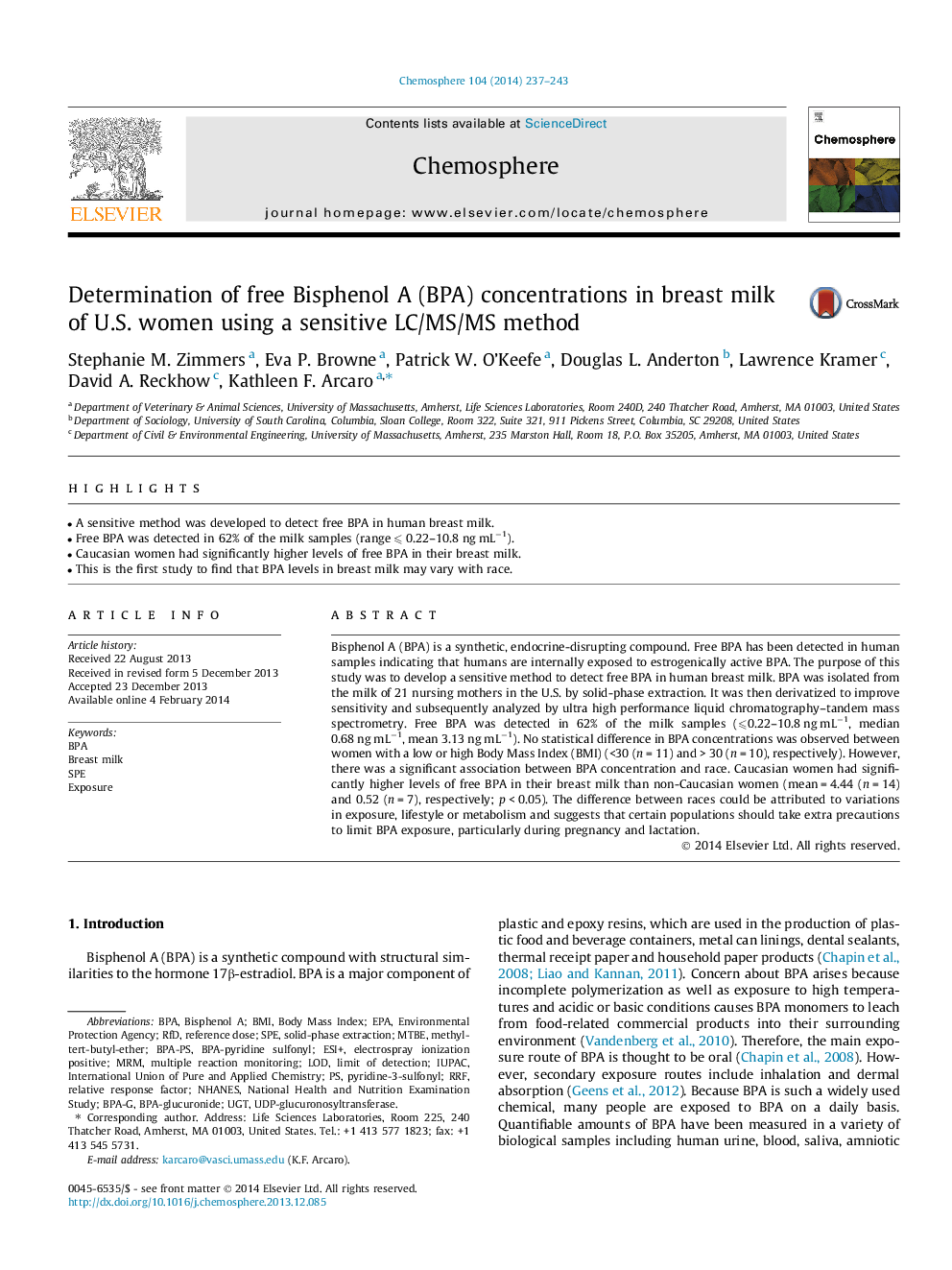| کد مقاله | کد نشریه | سال انتشار | مقاله انگلیسی | نسخه تمام متن |
|---|---|---|---|---|
| 4408846 | 1618867 | 2014 | 7 صفحه PDF | دانلود رایگان |

• A sensitive method was developed to detect free BPA in human breast milk.
• Free BPA was detected in 62% of the milk samples (range ⩽ 0.22–10.8 ng mL−1).
• Caucasian women had significantly higher levels of free BPA in their breast milk.
• This is the first study to find that BPA levels in breast milk may vary with race.
Bisphenol A (BPA) is a synthetic, endocrine-disrupting compound. Free BPA has been detected in human samples indicating that humans are internally exposed to estrogenically active BPA. The purpose of this study was to develop a sensitive method to detect free BPA in human breast milk. BPA was isolated from the milk of 21 nursing mothers in the U.S. by solid-phase extraction. It was then derivatized to improve sensitivity and subsequently analyzed by ultra high performance liquid chromatography–tandem mass spectrometry. Free BPA was detected in 62% of the milk samples (⩽0.22–10.8 ng mL−1, median 0.68 ng mL−1, mean 3.13 ng mL−1). No statistical difference in BPA concentrations was observed between women with a low or high Body Mass Index (BMI) (<30 (n = 11) and > 30 (n = 10), respectively). However, there was a significant association between BPA concentration and race. Caucasian women had significantly higher levels of free BPA in their breast milk than non-Caucasian women (mean = 4.44 (n = 14) and 0.52 (n = 7), respectively; p < 0.05). The difference between races could be attributed to variations in exposure, lifestyle or metabolism and suggests that certain populations should take extra precautions to limit BPA exposure, particularly during pregnancy and lactation.
Journal: Chemosphere - Volume 104, June 2014, Pages 237–243